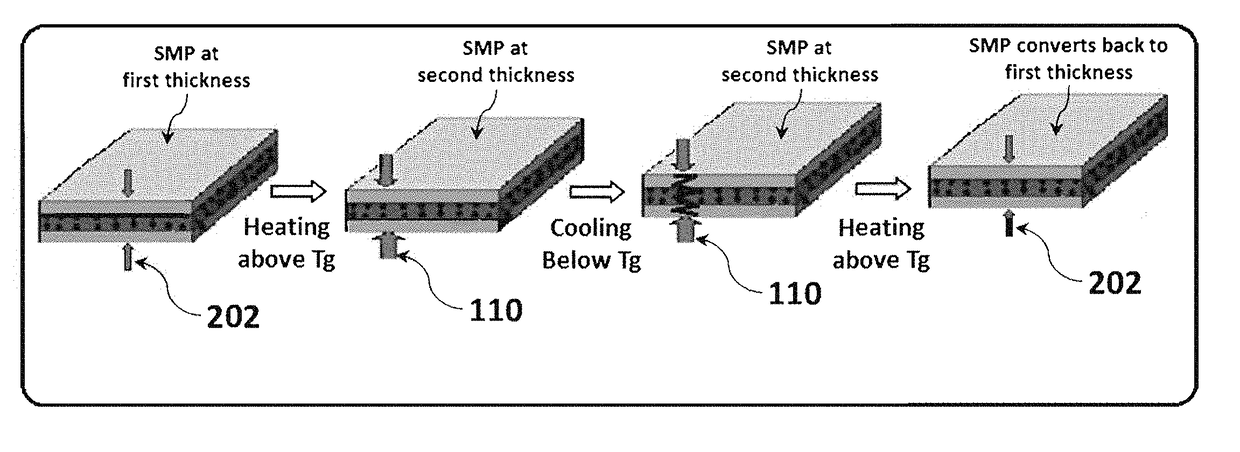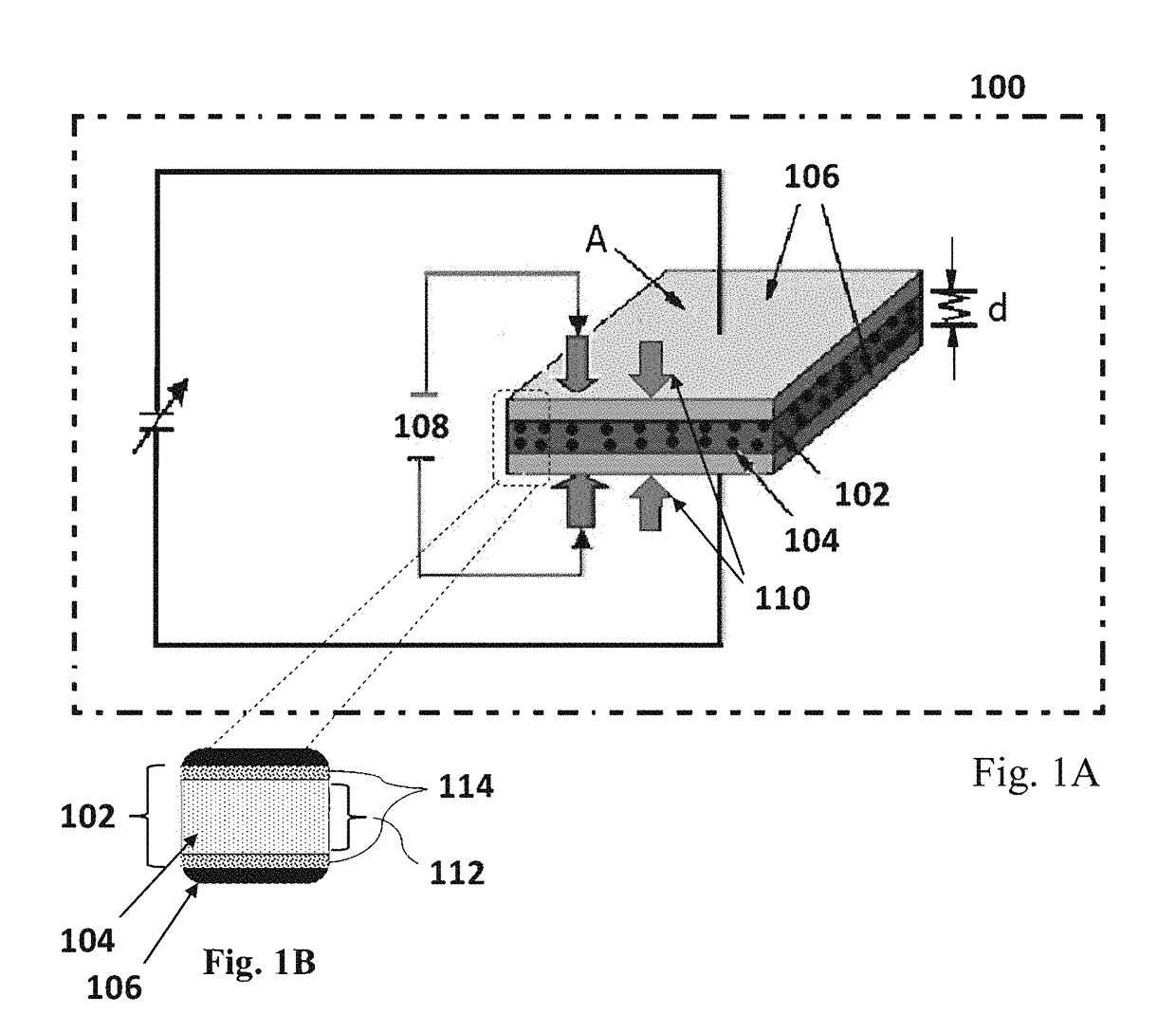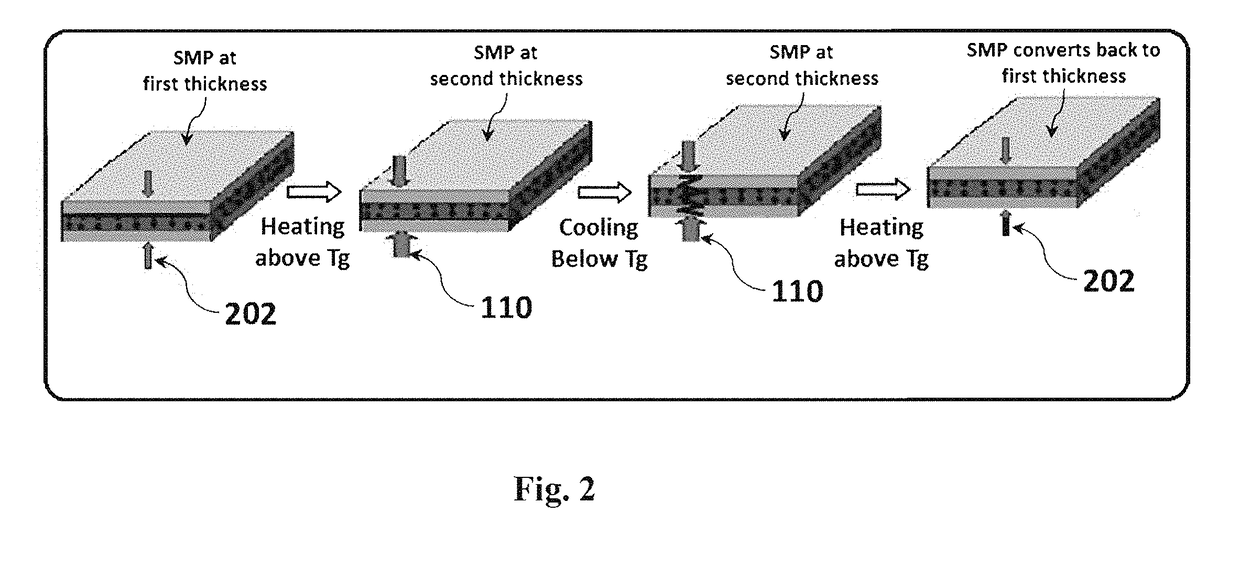Tunable shape memory capacitor and a method of preparation thereof
a memory capacitor and shape-memory technology, which is applied in the direction of variable capacitors, fixed capacitors, capacitors with temperature varied dielectrics, etc., can solve the problem that few investigations have been conducted on shape-memory polymers (smps)
- Summary
- Abstract
- Description
- Claims
- Application Information
AI Technical Summary
Benefits of technology
Problems solved by technology
Method used
Image
Examples
example 1
[0083]The chemicals used in various embodiments of the present invention were supplied by Aldrich Company as analytical grade reagents. The raw materials were used as purchased without further purification. Millipore MilliQ purified deionized water was used in all operations. The poly vinyl alcohol was dissolved in 100 ml deionized water at 90° C. Then, glutaraldehyde was added to the PVA solution and it was stirred for 36 h. The resulting solution was casted on a cuboid glass mold to get a solid dielectric layer.
example 2
[0084]To further confirm the chemical composition of the PVA dielectric layer, FTIR spectroscopy of the dielectric layer was perfoi wed and the resultis shown in FIG. 3. The peak as observed at around 3300 cm−1 corresponds to —OH group in the polymer backbone. The peaks associated with the —CH2 asymmetric and symmetric stretching bands were also observed at 2918 cm−1 and 2852 cm−1, respectively. Also, the peak at 1413 cm−1 corresponds to the C—C stretching.
[0085]Additionally, the scanning electron microscopy micrograph of the dielectric layer is shown in FIG. 4.
[0086]Furthermore, FIG. 5 represents a relationship between the recovery time and the recovery ratio of a PVA dielectric layer. The recovery time is defined as the amount of time that is required for a PVA dielectric layer to switch back to the original shape.
example 3
[0087]A shape memory capacitor was formed by sandwiching a 1 mm-thick layer between two gold electrodes. A layer of gold was deposited on each side of the shape memory dielectric layer. The capacitance of the capacitor was measured and the real and imaginary parts of the dielectric constant were determined.
[0088]The real and the imaginary components of the dielectric constant of the PVA dielectric layer were measured as function of frequency as shown in FIG. 6A and FIG. 6B. According to these figures, the dielectric constant of the PVA dielectric layer revealed a dispersive behavior. For example, the real component of the dielectric constant increased from 7.41 to 16.87 at 10 kHz upon increasing temperature. The imaginary component of the dielectric constant was also revealed a dramatic increase with increasing temperature.
PUM
 Login to View More
Login to View More Abstract
Description
Claims
Application Information
 Login to View More
Login to View More - R&D
- Intellectual Property
- Life Sciences
- Materials
- Tech Scout
- Unparalleled Data Quality
- Higher Quality Content
- 60% Fewer Hallucinations
Browse by: Latest US Patents, China's latest patents, Technical Efficacy Thesaurus, Application Domain, Technology Topic, Popular Technical Reports.
© 2025 PatSnap. All rights reserved.Legal|Privacy policy|Modern Slavery Act Transparency Statement|Sitemap|About US| Contact US: help@patsnap.com



